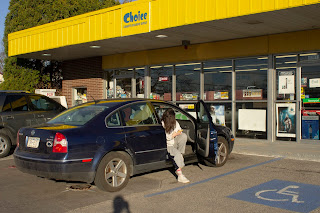Jimmie Lin Artist Style Paragraphs
Corinne Silva (Garden State)
Corinne Silva, author of her photographic novel Garden State, is a London based photographer and videographer born in Leeds, England. Since her early exposure to photography, she has consistently reflected her particular fascination with botany in relation to cultural/political backgrounds in her works. Dr. Silva earned her bachelor's degree in photography at the Nottingham Trent University, and continued on to earn her master’s in photography at University of Brighton, and eventually a P.H.D. in photography at University of the Arts London’s (UAL)–London College of Communication in 2014. Ever since, she’s continued her professional career in the world of academia as a postdoctoral research fellow at the Photography and the Archive Research Centre at London College of UAL’s London College of Communication. With her solidified background in the field of photography, she is accustomed to both old and modern photography setups–though one of her more preferred, on-the-go setups, include an old film camera mounted on a lightweight/portable tripod. The combination of film and her interest in botany comes together in her photographs to create her signature square images of plants and gardens. Specifically, her book Garden State encapsulates the a plethora of images containing both simple and obscure layouts of plants in a garden setting. This being said, the images, though some simple and some more abstract, all come together in satisfying manner that incorporates strong symmetry and balance throughout. Therefore, it seems that incorporating purposeful, stylistic attributes such as symmetry and texture/color balance in an image of plants or gardens will best replicate Dr. Silva’s photography style.
Marty LaVor (No Borders)
Marty LaVor, author of his photographic novel No Borders, is a Washington D.C. freelance photographer as well as an active political figure in D.C. who earned a P.H.D in Special Education and was an active member in the public education system as an executive director of rehabilitation training for retarded and physically handicapped women–before becoming a consultant for the U.S. House of Representatives Select Committee on Hunger. Although his professional career remained constant throughout his life, Dr. LaVor continued to practice his childhood hobby of photography. Dr. LaVor’s go-to camera setup includes a Nikon D5 with a 16-35mm 2.8 lens. With the wide angle and medium frame zoom capability of this lens, he is able to capture all aspects of a narrative in which he aims to sculpt in his work. More specially, in his book No Borders, he focuses on capturing the stories of people from all walks of life, focusing mostly on those who are considered to be less-advantaged, by making wide-angle images of them in context of with ‘disadvantaged’ lifestyle as well as medium framed portraits of their natural, ungroomed facial expressions. Due to Dr. LaVor’s professional work (studies) in the disadvantage (i.e. mental and physical disabilities), he chooses to actively step into the world of poverty through his photographic works. Dr. LaVor’s images are almost all particularly similar, in the sense that they all have black backgrounds and are innately black and white themselves in order to focus on the subject and/or context of the subject so the viewer may identify (the subject’s) humanizing characteristics. Therefore, the best way to replicate Dr. LaVor’s photographic style would be to photograph portraits of subjects in black and white, with plain black backgrounds–that come together to humanize the subjects.
Ernst Haas (The Creation)
Ernst Haas, author of his best-selling photographic novel The Creation, was an Austrian photojournalist born in Vienna, Austria in 1921 and has since passed away in New York City in 1986. During his forty year career as a photojournalist, however, Ernst photographed historical events of the likes of World War II–later being one of the early photographers to experiment with color photography and making images for popular magazines such as Life and Vogue. His photography equipment included Leicaflex cameras and equipment exclusively–specially his beloved 35mm lens. Ernst aspiration to use photography as a means to express his individualistic ideas and creativity drove him to take advantage of all the photographing opportunities he stumbled upon so he could to develop his skill and learn about the art in order to create images that satisfied his own visions. This is also a reason he openly experimented with the early development of color photography. His interest in the use of color in photographs ultimately enabled him to expand his style of expression in the images he created. In Ernst’s book The Creation, he utilizes the 35mm frame to highlight the rich colors and prominent textures he find in nature. Therefore, it seems best to utilize the same 35mm framing and purposeful focus on vibrant colors and unique textures in nature in order to replicate his style of photography in The Creation.



Comments
Post a Comment